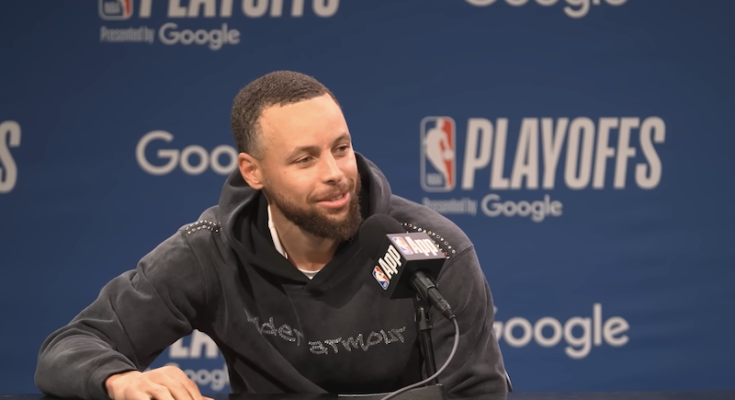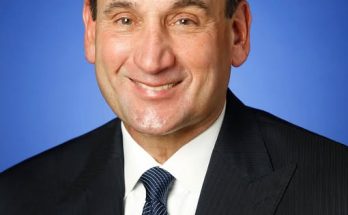Stephen Curry on the Golden State Warriors’ Quiet Offseason: Still Need Some Pieces to Take Us to the Next Level**
In the fast-evolving landscape of the NBA, offseason moves often set the tone for a team’s trajectory in the upcoming season. Fans, analysts, and critics scrutinize every free-agent signing, trade, and draft pick, eager to gauge whether a team is positioning itself for a championship push or rebuilding for the future. For the Golden State Warriors, a franchise with a storied history of success and innovation, their recent offseason was notably subdued—marked by a deliberate approach rather than a flurry of high-profile acquisitions.
Amid this quiet period, star point guard and franchise icon Stephen Curry publicly acknowledged that the Warriors still need to add certain pieces to elevate their roster and contend at the highest level. His comments reflect a nuanced understanding of team-building, emphasizing patience, strategic planning, and a clear-eyed assessment of what’s necessary to sustain their championship ambitions.
This article explores Curry’s perspective on the Warriors’ offseason, the strategic reasoning behind their measured approach, and the implications for the team’s future. We will analyze their roster composition, the challenges they face, and the specific areas where they believe reinforcements are needed to push the franchise to the next tier.
Since acquiring Stephen Curry in 2009 and building around him, the Warriors have become one of the most successful franchises in NBA history. Their innovative style—centered on ball movement, three-point shooting, and versatile defense—transformed the league’s approach to basketball. Their dynasty, crowned with multiple championships, established a culture of excellence, resilience, and strategic adaptability.
However, the NBA is a league of constant change. Injuries, roster turnover, and evolving competition mean that even the most successful teams must continually adapt. Golden State’s core—Curry, Klay Thompson, Draymond Green—remains formidable, but age, injury history, and roster depth have raised questions about their ability to sustain dominance.
The 2022-2023 season brought both promise and challenges for the Warriors. While they made a playoff run, inconsistencies, especially in the postseason, exposed vulnerabilities. Offseason priorities centered on addressing these issues, maintaining their core, and adding new talent to complement their existing roster.
Unlike previous years—where the Warriors made high-profile trades or free-agent signings—they opted for a more measured approach this offseason. This strategy reflects a calculated understanding of their roster needs, cap space, and the league’s evolving market dynamics.
**Key features of their offseason include:**
– **Re-signing core players:** Ensuring continuity with Curry, Thompson, Green, and other veterans.
– **Minor roster adjustments:** Signing role players and veteran contributors who fit their system.
– **Avoiding impulsive moves:** Emphasizing patience, believing that the right opportunities will emerge during the season or at the trade deadline.
– **Focusing on development:** Giving young players like Jonathan Kuminga, Moses Moody, and others more responsibility and experience.
This approach aligns with the franchise’s philosophy of building sustainable success rather than chasing quick fixes, a principle Curry himself has championed publicly.
In recent interviews and press conferences, Curry has been candid about the team’s current state and future needs. His comments emphasize a realistic optimism—acknowledging that the roster is solid but not yet complete.
– **“We’ve got a great core, but to get to the next level, we need to add some pieces that can help us compete at the highest level consistently.”**
– **“We’re not where we want to be yet, but that’s part of the process. We believe in our guys and in the plan we have.”**
– **“The league is competitive, and teams are always looking to improve. We have to do the same.”**
These statements reveal a mature understanding of team-building, recognizing that championships are won not just through talent but through strategic roster construction.
What does “the next level” mean for the Warriors? It’s a multifaceted concept encompassing:
– **Defensive consistency:** Improving perimeter and interior defense, especially against high-powered offenses.
– **Depth and versatility:** Adding reliable role players who can adapt to different lineups and situations.
– **Sustained offensive efficiency:** Ensuring that the team can generate scoring from multiple sources, especially when Curry or Klay are off the floor.
– **Championship pedigree:** Building a roster that can withstand the physical and mental demands of deep playoff runs.
Curry’s remarks suggest that the current roster, while talented, still lacks some of these qualities—particularly in defensive versatility and bench depth.
Based on Curry’s comments, the team’s internal assessments, and industry reports, several specific areas emerge as priorities for potential upgrades.
One of the Warriors’ ongoing vulnerabilities has been perimeter defense, especially against elite wings and guards. As the league shifts toward positionless basketball with versatile offensive stars, the Warriors need more reliable defenders on the wing.
– Veteran defenders who can switch comfortably and provide leadership.
– Young players with high upside who can develop into lockdown defenders.
While Curry remains a generational talent, the team needs more reliable secondary playmakers to alleviate pressure and create scoring opportunities when he rests. Developing or acquiring a competent backup point guard could be crucial.
Although the Warriors have relied heavily on their small-ball lineup, adding a rim protector or versatile big could provide defensive stability and offensive spacing.
While Golden State is historically a three-point shooting powerhouse, maintaining or improving shooting efficiency remains vital, especially with defenses increasingly focused on limiting perimeter scoring.
Why did the Warriors opt for a quiet offseason instead of making splashy moves? Several strategic reasons underpin this decision:
– **Cap flexibility:** The team wants to preserve financial flexibility to chase key targets at the deadline or in future offseasons.
– **Development of young players:** They believe in the potential of their young core and want to give them more responsibility.
– **Market conditions:** The current trade market favors sellers, making impactful deals more challenging or expensive.
– **Injury recovery and health:** Ensuring that injured players like Klay Thompson and Andrew Wiggins are fully healthy before making significant roster changes.
– **Championship window:** The Warriors’ core remains competitive, and patience allows for a more targeted approach, avoiding overpaying or making moves that could hamper long-term sustainability.
While the offseason was quiet, the NBA trade and free-agent markets are fluid, and opportunities could arise during the season. Some potential avenues include:
– **Mid-season trades:** Targeting veteran role players or defensive specialists to bolster the roster.
– **Buyout market:** Acquiring free agents who are waived by other teams and can provide immediate impact.
– **Draft and development:** Investing in young prospects and developing them into key contributors.
The Warriors are known for their strategic patience and ability to identify value during the season, making them a team to watch as the trade deadline approaches.
Curry’s leadership and on-court performance will continue to be pivotal. His ability to elevate his game and lead the team in clutch moments is well established, but the team must complement him with reliable role players.
**Klay Thompson’s health and consistency:** After battling injuries, Thompson’s return to form is crucial for spacing and scoring.
**Draymond Green’s versatility:** Green’s defensive prowess and playmaking are vital, but he needs supporting talent to maximize his impact.
**Young core development:** Kuminga, Moody, and others have shown flashes of promise. Their growth could be the missing piece the Warriors need.
The Warriors’ approach reflects a broader philosophy rooted in sustainability and long-term competitiveness. Their focus on drafting well, developing young players, and making calculated moves ensures they remain a formidable force.
Stephen Curry’s comments about still needing some pieces underscore the understanding that building a true contender is an ongoing process. The franchise’s leadership appears committed to patient, strategic growth rather than short-term fixes.
Stephen Curry’s honest assessment that the Warriors still need additional pieces to reach the next level encapsulates the reality of a team balancing legacy, current competitiveness, and future sustainability. Their quiet offseason was a reflection of strategic patience, emphasizing development and flexibility over impulsive moves.
As the NBA season unfolds, the Warriors’ front office and coaching staff will be watchful for opportunities to bolster their roster—whether through trades, buyouts, or developmental gains. With Curry leading the charge, and with a core committed to excellence, the Warriors remain confident in their ability to contend.
The next few months will be critical. The team’s ability to identify and acquire the right pieces at the right time could define their championship prospects and secure their legacy as one of the league’s most innovative and successful franchises. Curry’s leadership and clarity about their needs show a franchise that is aware of its strengths and limitations—a team poised to make strategic moves when the time is right.
In the end, the “next level” is within reach, and Golden State’s patience and strategic vision suggest they are prepared to take it when the moment arrives.



